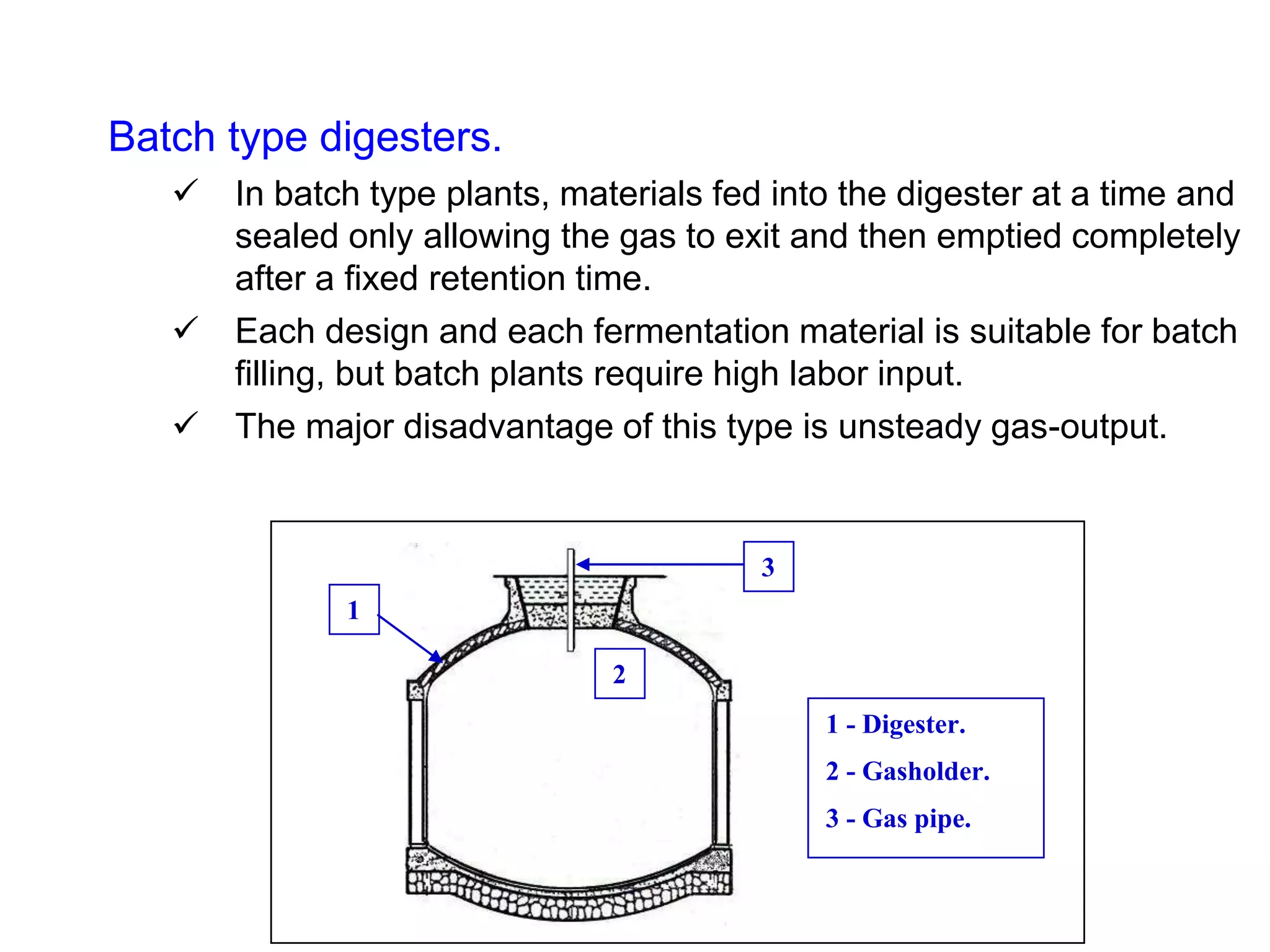The document discusses biological conversion processes, particularly focusing on anaerobic digestion and biogas production from organic waste. It outlines the benefits of biogas, the stages of anaerobic digestion, and the factors influencing biogas production, such as substrate temperature and nutrient availability. Additionally, it describes various types of biogas plants, including fixed-dome and floating-drum designs, along with their advantages and disadvantages.




























